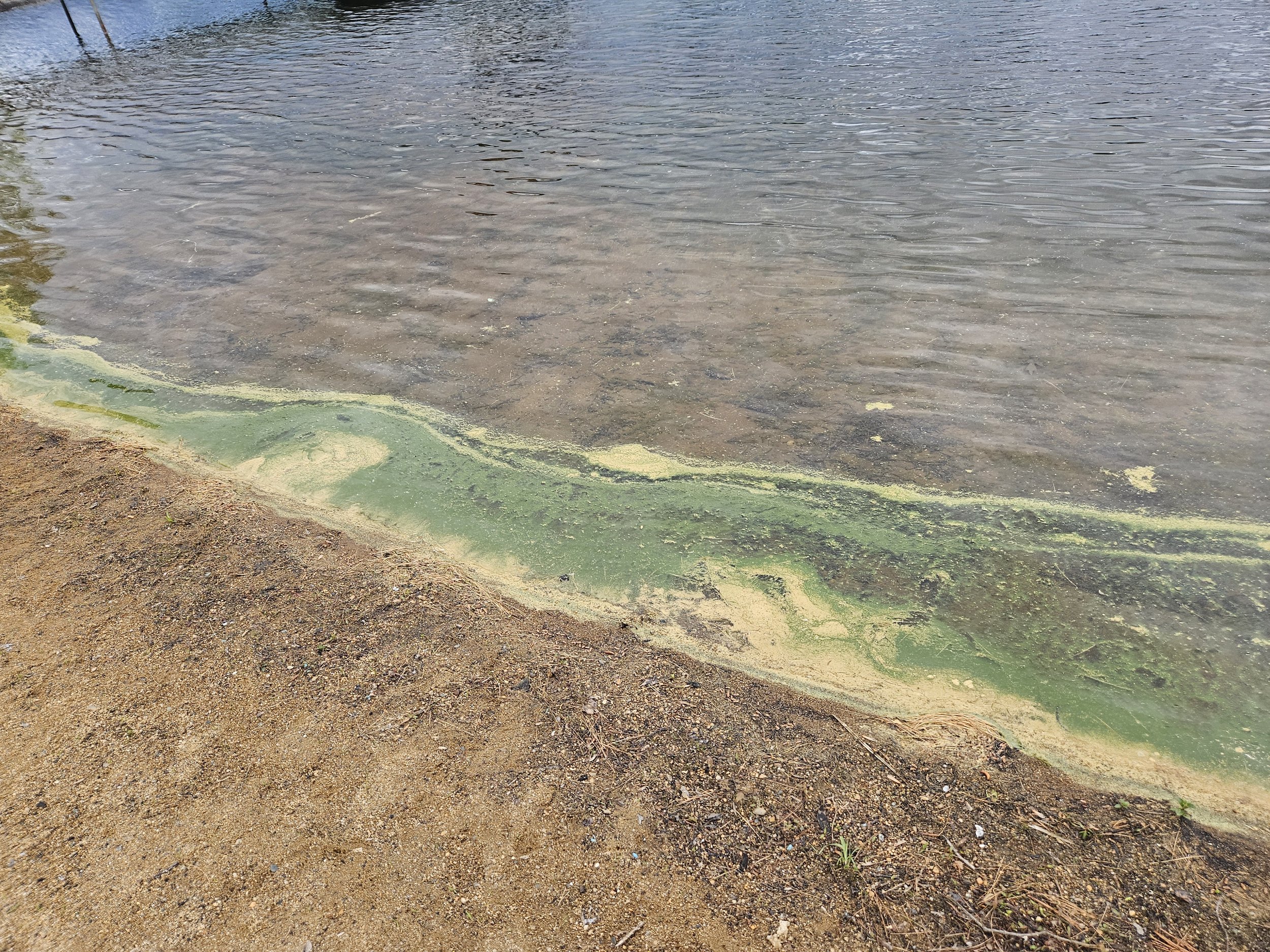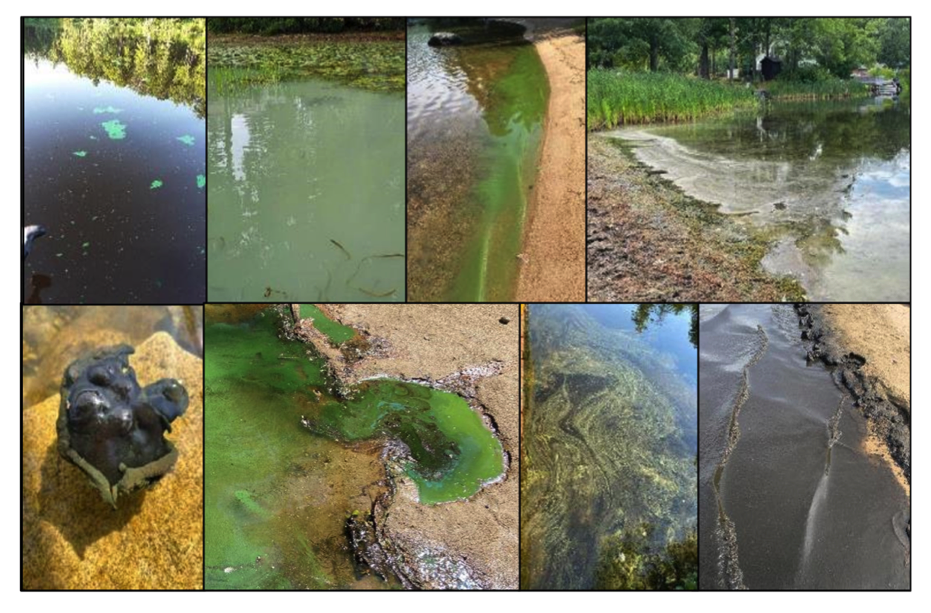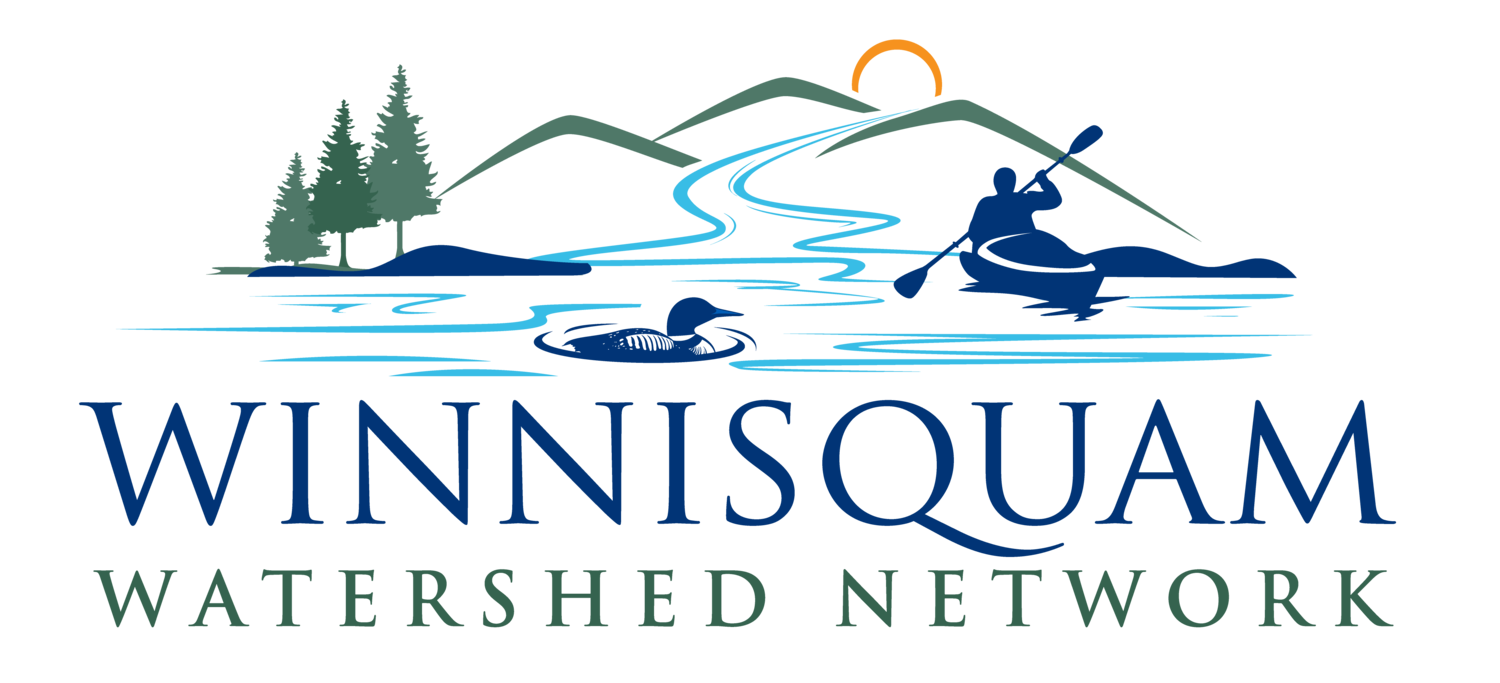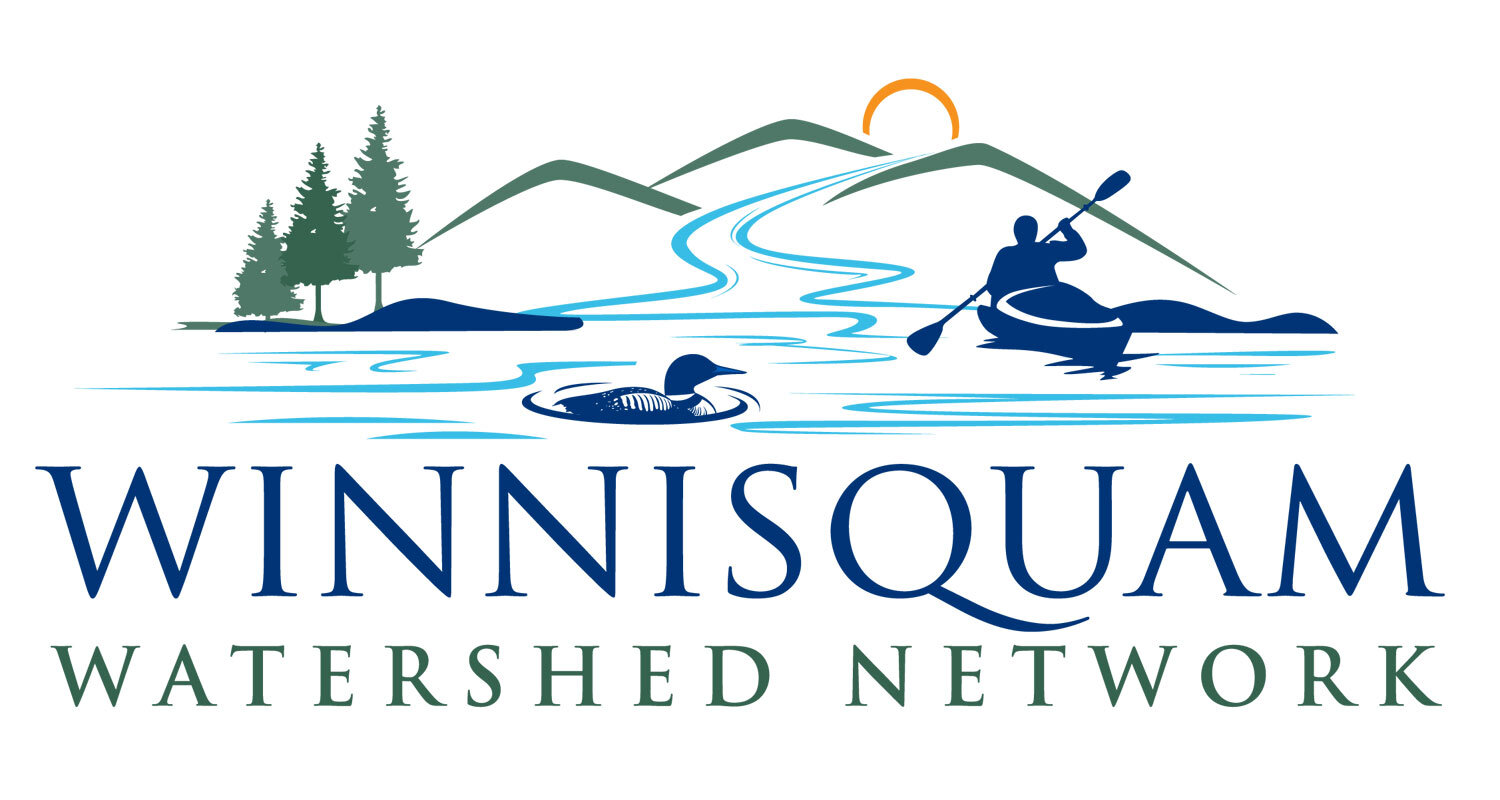
Cyanobacteria - What is it and what you can do
With the recent Cyanobacteria warnings on Lake Winnipesaukee, and alerts on our own Lake Winnisquam many people are wondering what is causing them, what their impact is, and what can be done to prevent them.
What are cyanobacteria?
Cyanobacteria are microscopic organisms that are naturally present in most freshwater lakes and ponds and are an essential component of the aquatic ecosystem. Under certain conditions though they can grow rapidly and generate visible “blooms”. Blooms can look like scum, streaks, mats or spilled paint on the surface of the water and in the water column and are typically green, blue-green, yellow or brown in color. Some can produce toxins that can be harmful to people, pets, and wildlife. Not all cyanobacteria blooms produce toxins but there is no way of knowing just by looking at them. So your best bet is to treat all blooms as harmful and avoid contact.

Source: New Hampshire Department of Environmental Services
What should you do if you see a potential cyanobacteria bloom?
If you see anything on the lake or shoreline that you suspect might be a cyanobacteria bloom please take photos and report it to the NHDES as soon as possible with the time and location it was observed. It is useful if you let the WWN know too, so that we can coordinate sampling. Most importantly, don’t wade or swim in or drink the water. If anyone, including pets or livestock, comes in contact with a bloom or scum they should rinse off with fresh water as soon as possible.
What’s the difference between a cyanobacteria warning and an alert?
If NHDES determines that the cyanobacteria cell density in a bloom exceeds the recreational health threshold of 70,000 cells/mL they will issue a lake-wide warning, as that is the level at which toxins may be present at a concentration that threatens public health. When a warning is issued NHDES advises lake users to avoid all contact with the water and keep pets and livestock out as well. Lakes are resampled weekly until the bloom subsides and the warning removed. Alerts are issued 1) based on a photo submitted before NHDES can analyze a sample and a bloom that may be a health risk is evident; 2) when the cyanobacteria cell density is approaching but does not yet exceed 70,000 cells/mL; or 3) if a bloom is reported, but conditions may have changed. Alerts are intended to serve as statements to be on the watch for a potential cyanobacteria bloom and lake users are advised to avoid contact with bloom material and to keep pets and livestock out of the water. An alert may develop into a warning but will otherwise remain active for a week. Resampling only occurs if further bloom reports are submitted.
Why are cyanobacteria blooms on the rise, and what can be done about it?
Cyanobacteria blooms are becoming more common in our lakes due to increased nutrient input (primarily phosphorus), warming water temperatures and changing rain patterns. The best method for decreasing the likelihood of a cyanobacteria bloom is to reduce nutrient pollution into the lake. Stormwater and erosion from the land surfaces within the watershed are a primary source of nutrients to Lake Winnisquam. Fertilizers, shoreline and beach erosion, buffer clearing and poorly maintained septic systems can also contribute nutrients.
The Lake Winnisquam Watershed Based Plan that the WWN completed in 2022 identified specific sources of nutrient-laden runoff throughout the watershed and outlines a number of measures that should be undertaken to reduce phosphorus input to our lake. The WWN is currently working to address several of the top priority locations identified in the plan through a $125k grant to design and construct stormwater treatment practices at three locations around the lake and we aim to implement additional projects in the future.
Here’s what you can do to help:
Take a free LakeSmart self assessment and learn what you can do on your own property. You’ll get lots of personalized tips on how you can better protect lake health.
Properly maintain your household septic system and pick up after your pets.
Maintain a buffer of natural vegetation on the water edge to filter water before it enters the waterbody.
Be aware of the Shoreland Protection Act and its restrictions on the use of fertilizers along the shoreline. No fertilizer, except limestone, may be used within 25 feet of the reference line (shoreline).
Support the Winnisquam Watershed Network and our work to implement the Winnisquam Watershed Management Plan. Encourage your friends and neighbors to do so as well.

